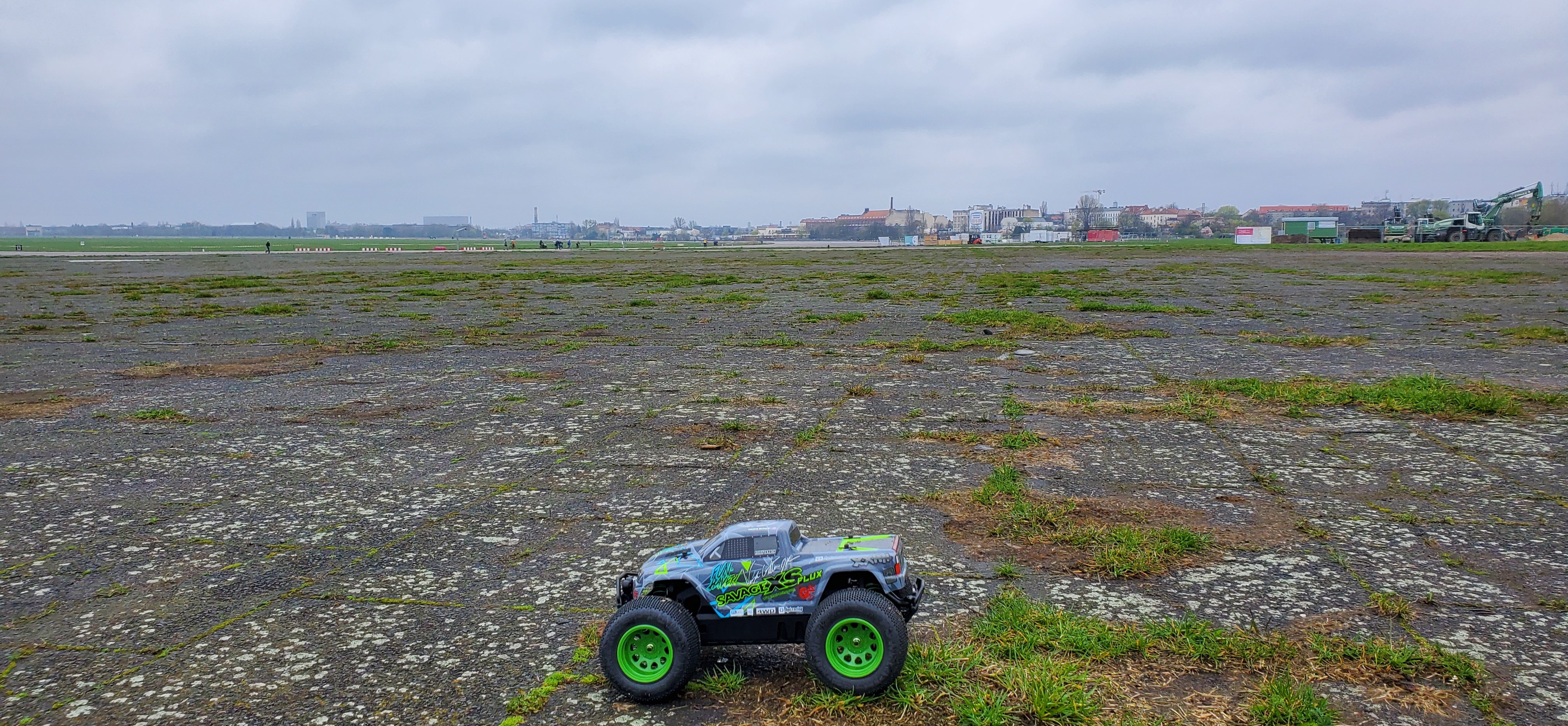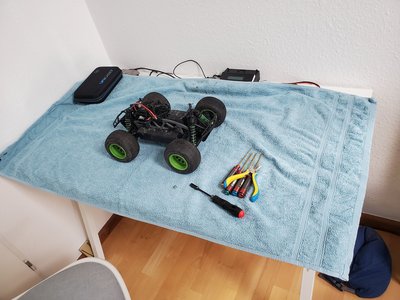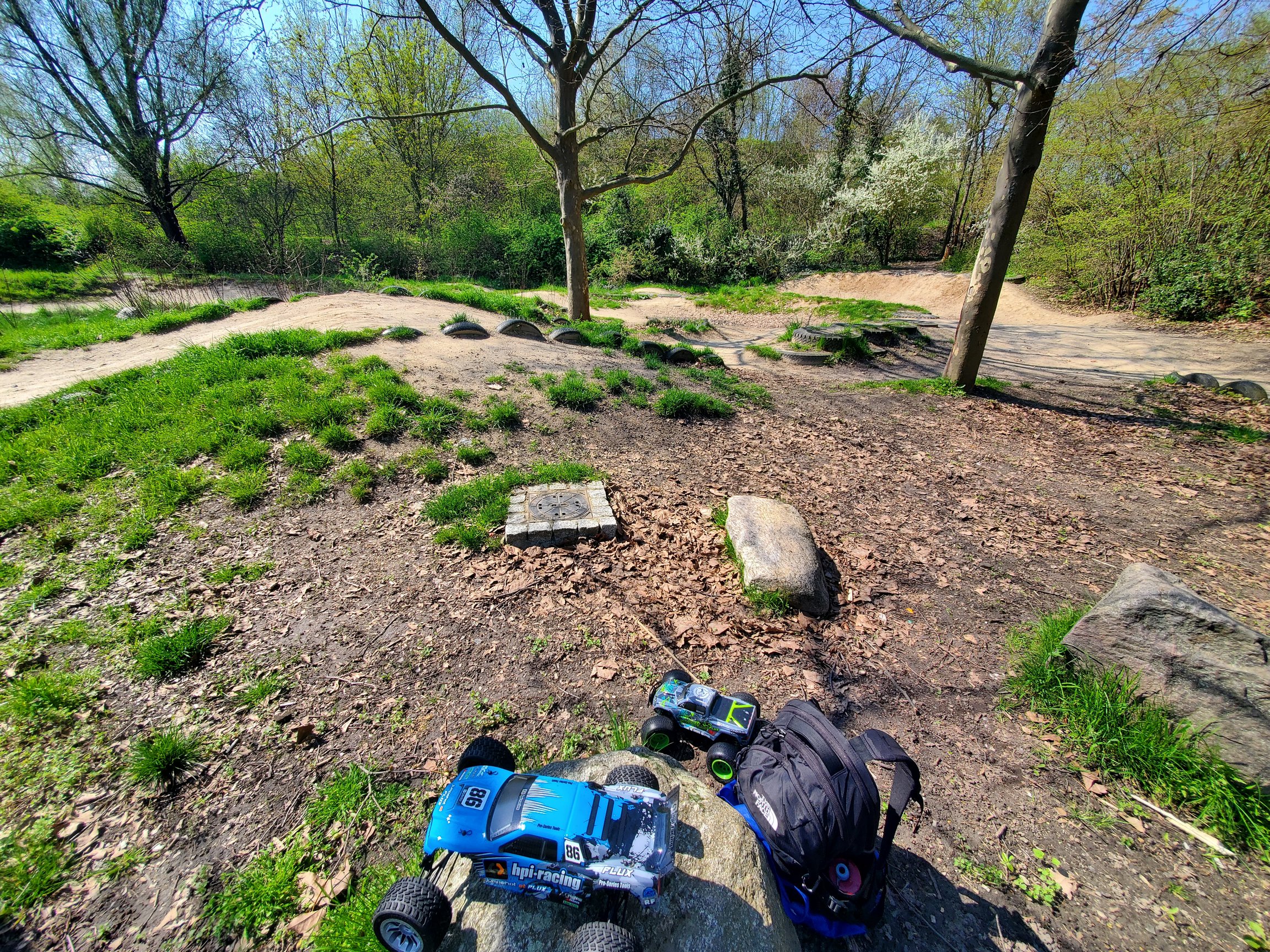A work in progress to document common issues that brand new RC cars/trucks tend to have … and other misc. tips.

Buying a brand new RC car is satisfying, but prepare to handle some immediate issues as all the pieces set into place, spin and wear for the first time, loosen, get gritty, etc.
Essential tip: set the failsafe on the receiver so the motor shuts off when you run out of range. Otherwise, you run the risk of it being set from the factory backwards – and when you accidentally run out of range, or forget to turn on the transmitter, the car will drive away at full throttle. Not a good day.
Common problems that appear in first runs
Sudden and complete loss of motor power but the steering still works; hearing a whine upon throttle
- Slipped pinion – the gear connected directly to the motor (the pinion gear) loosened. Go tighten it. Bonus: add threadlock. The screw that holds this pinion in place - a “grub” screw - is the smallest screw on the entire truck, seriously. It’s very easy to strip, so be careful.
Honestly, the last time this happened, I tightened the grub screw but then it loosened again, so I just superglued the grub screw in place and said I’ll just replace the whole gear if it goes loose again.
Withering of motor power; truck moving slowly while the motor is spinning like hell
- Slipper clutch loosened – look in the manual to tighten the slipper clutch properly.
Wheels are vibrating like they want to fall off
- Water buildup inside the tires – punch two small holes through the rubber, 180 degrees apart, on each tire so the water spins out of them. This takes a few runs to really clear it out, and keep in mind it may never be “perfect” again.
Clicking sounds upon acceleration
- Differential gear is chipped – try to figure out if the clicking is coming from the back or the front (it is most likely the back). Fixing this most likely requires replacement parts.
Glitchy steering, especially at full throttle
- Power consumption of the servo is too high for the receiver – add a “glitch buster” capacitor to the receiver.
“I don’t have a workspace or tools” ._____.
Allow me to explain the incredible process of how I create a workspace:
- Clear my computer desk
- Toss down an old towel


Here are the tools I bought for my workshop abroad:
- A hex driver set: 1.5, 2.0, 2.5, 3.0mm sizes
- A nut driver to get the wheels off (in my case this was 7mm)
- Pliers
Stuff I recommend you buy:
- Extra body pins
- Blue thread lock
- WD-40
- Ammo box (~$18 on eBay) to store the LiPo batteries in - remove the rubber seal inside the box
Random tips:
- Take good pictures of the exploded views in the manual, they will come in handy for maintenance and when ordering parts
- Bring around a small toolkit containing the tools I mentioned above. Honestly you’ll want the pliers to get the body pins off sometimes.
“My truck is super muddy / dirty / nasty, what do I do?”
Literally give the thing a bath in clean water (provided the manufacturer says the thing is waterproof). Afterwards, I like to spray some WD40 around the ends of the axles on the wheel sides, so it works into the parts and stops rust from forming.
 A little-used dirt BMX track, perfect for RC fun
A little-used dirt BMX track, perfect for RC fun
Other Notes
- In general, the “RTR” (Ready To Run) cars that you can buy have cheap electronics. So you can expect the ESC (Electronic Speed Controller) to eventually die, alongside the servo for the steering.
- The toughest truck I ever drove was a Tekno MT10 built from a kit. It was tough as nails.
- Half the fun in RC is tinkering with stuff, ripping apart the thing and tuning bits and bobs, making upgrades, cleaning and oiling stuff etc. If you don’t enjoy that process you’ll hate the hobby.
- You can get MIP 1.5,2.0,2.5mm and other size hex drivers that will fit a drill chuck. You don’t have to manually unscrew tiny little hex bolts… your wrists will get tired of it. But you’ll want the manual tools for adjustments regardless.